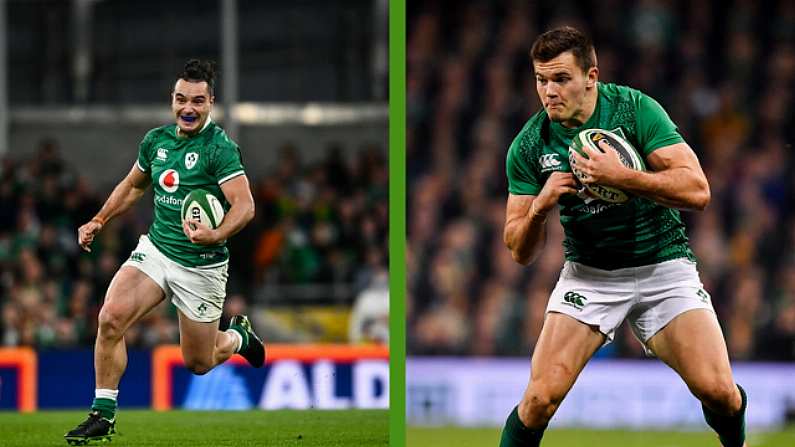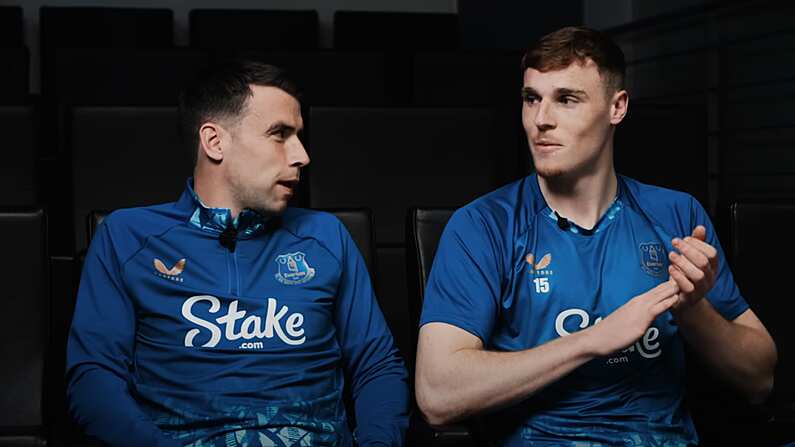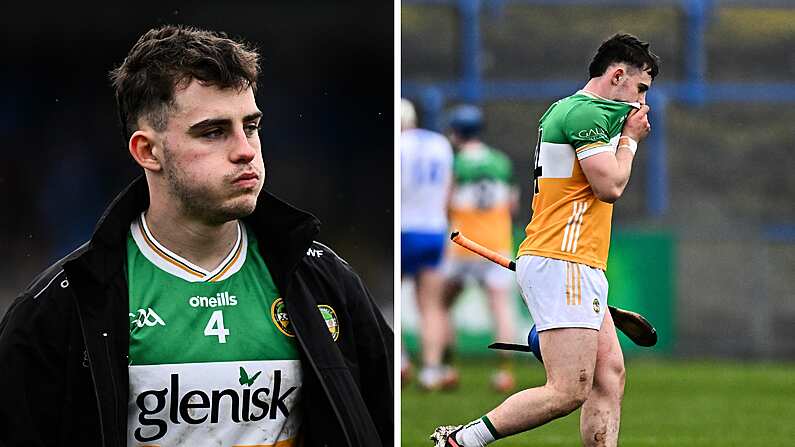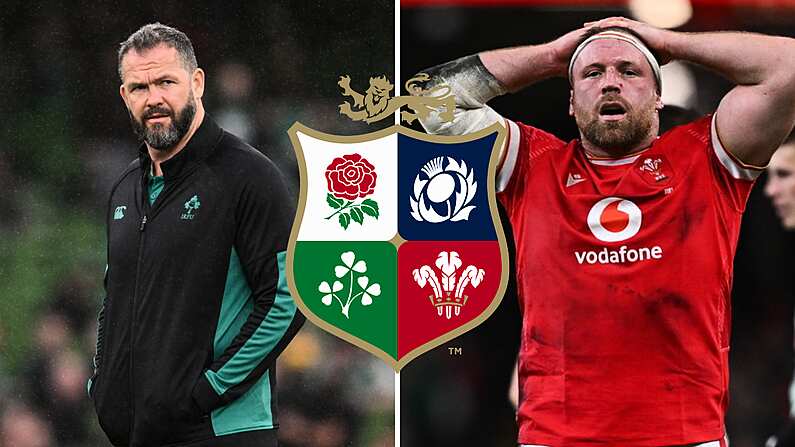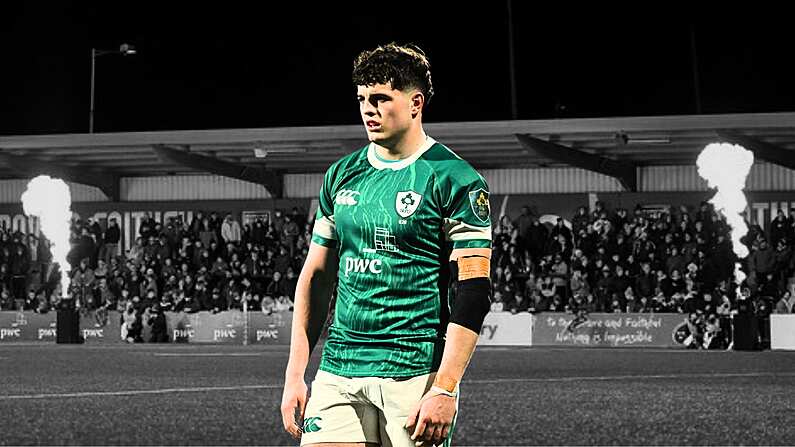It was yet another memorable day for Irish rugby on Saturday. Ireland beat the All Blacks 29-20 in a breath-taking display. Ireland now have won three out of the last five matches between themselves and New Zealand. However this was probably the most comprehensive and deserving victory Ireland have had over New Zealand. They were better and more dominant in nearly every aspect of the match. This victory was much less of a scrap than 2018 in particular. We thought it would be interesting compare the victory on Saturday to 2018 to show the evolution Schmidt to Farrell.
Attack
Re-watching both games you see a stark contrast in approaches Ireland took in both matches in terms of attack. There is significantly less kicking from Ireland on Saturday. In 2018, Ireland kicked the ball a total of 38 times (Kieran Marmion started at scrum half for Conor Murray that day at scrum half), while last Saturday they only kicked it 22 times. On Saturday, Ireland only kicked when it was on and kicked for territory. One example of this was Jamison Gibson-Park's successful 50:22 box kick in the second half. Ringrose scooped up the ball and after a quick ruck, Gibson-Park spotted space in New Zealand's 22 and thus box kicked it to the space. They pinned New Zealand back every chance they got, winning the territory battle with 65% on Saturday compared to the 53% they had in 2018. This shows that Ireland played a larger majority of the game in New Zealand's half on Saturday.
Just after the restart, Gibson Park kicks this beauty of a 50:22 to put New Zealand back under pressure. pic.twitter.com/L4Rl2EIz4e
— The Loose Head (@TheLooseH) November 14, 2021
Ireland ran many more dummy lines and did more pull back passing on Saturday, forcing the All Blacks to bite in defensively before passing wide to the wings. In 2018 the opening attacks were box kicks followed by straight lines of running. The ball wasn't going wide early and keeping the ball was priority. However, you can see these lines of running and wide passes in Ireland's first attack on Saturday. There were eight phases of attack before Andrew Conway made a break on the wing. In those eight phases leading to that, forwards were executing pull back passes to the likes of Sexton, Lowe and Ringrose and other forwards running hard dummy lines to engage the All Blacks defence. This led to space being created out wide for Conway to make the first break with less than 2 minutes on the clock.
🏉 TRY IRELAND – ‘Sit back and suck it in’ - Caelan Doris steps inside Codie Taylor and runs through as Ireland take the lead
📱 Updates - https://t.co/5pKHYHScer
📺 Watch - https://t.co/CStwnXf2cB
📻 Listen - https://t.co/wUq1XxhF4x #IREvNZL #RTERugby pic.twitter.com/55WUqaGYbe— RTÉ Rugby (@RTErugby) November 13, 2021
This continued throughout the match and when forwards did take it up, they used their feet to look for a weak shoulder in contact. In 2018, the carrying was more direct and hard, looking to go through the All Blacks rather than get around them. Caelan Doris's try in the second half was a great example of a back row using his feet.
Doris worked from the lineout around the ruck after Kelleher's carry and used his feet to turn sharply against the grain where Codie Taylor wasn't set to make a tackle. Doris broke that tackle and ran it in for the try that gave Ireland the lead once again.
One thing you might also notice in that clip was Andrew Conway being the first receiver off the lineout. On Saturday pretty much all the backs slotted in at first receiver as a way to protect Sexton. Since the Grand Slam in 2018, every time Ireland loss it seemed to come after Johnny Sexton was put under immense pressure by the defence. Everything Ireland did going forward once had to be facilitated through Sexton, so if you stopped him, you stopped Ireland's attack. However on Saturday the backs were all versatile and malleable enough to interchange positions to take the pressure off Sexton. Then when Sexton slots in it's because there's something on or they have a move they can execute.
The last thing to note on Ireland's attack is the ball retention. They had 60% possession on Saturday compared to the 52% they had in 2018. The carrying and rucking from the Irish forwards were impeccable. The speed of the ruck ball forced New Zealand to make a huge 158 tackles in the first half. In 2018 New Zealand only made 198 tackles over the 80 minutes, just 40 more than the first half on Saturday. By the end of the match New Zealand made the most tackles they have ever made in a game with 235.
158 - New Zealand made 158 tackles in the first half of this match, the most by a Tier 1 nation in a single half of rugby since Wales made 178 in the second half of a match against Ireland in the 2015 Six Nations. Siege. https://t.co/vjOzdwWZoF
— OptaJonny (@OptaJonny) November 13, 2021
Ball retention has been a staple of Irish rugby since Joe Schmidt was appointed head coach in 2013. It's the one aspect that hasn't changed much since Andy Farrell came in and why would it change? The longer Ireland have the ball the less likely the opposition are to score. This tweet below shows that Ireland are probably the best team in the world in the last decade at ball retention and forcing the opposition to make a lot of tackles.
8 - There have been eight instances of a Tier 1 team making 235+ tackles in a Test since Opta have recorded this data:
253 🇫🇷 (v 🇮🇪 2018)
252 🇦🇺 (v 🇿🇦 2014)
250 🏴 (v 🇮🇪 2015)
245 🇮🇹 (v 🇮🇪 2014)
245 🏴 (v 🇮🇪 2021)
242 🏴 (v 🇮🇪 2017)
235 🇿🇦 (v 🇳🇿 2018)
235 🇳🇿 (v 🇮🇪 2021)
Theme.— OptaJonny (@OptaJonny) November 15, 2021
Defence
Ireland loved defending under Joe Schmidt. They defended often and if they had the ball they would use the box kick to start a new defensive set with the aim of winning a penalty. Ireland defended for very long spells in 2018. After Stockdale's try, they defended for most of the match and New Zealand knocked on the door time and time again. New Zealand had a lot of the ball and created a lot of chances as the match went on, but didn't score a try.
On Saturday New Zealand had much less possession but still created opportunities. They're simply so good and have some of the best skills on the planet that they always create chances. However, like in 2018, Ireland's scramble defence was brilliant once again. In the ninth minute Beauden Barrett hit a crossfield kick to Will Jordan. The Crusaders winger caught it and on another day would score. However the workrate of James Lowe to tackle Jordan and Garry Ringrose and Andrew Conway working to make the follow up hit on Jordie Barrett saved Ireland from going down early.
The hit on Barrett by Ringrose & Conway was just incredible effort. Ringrose fought so hard to free himself to make the hit #IREvNZL pic.twitter.com/VzECykUxVv
— Brett Igoe (@brettruganalyst) November 15, 2021
Ireland only made 101 tackles on Saturday, less than the All Blacks made in the first half! That's just an incredible stat. It's a rare sight today to see a team make that little amount of tackles against the All Blacks and win. Ireland brought a huge intensity to their defence in this game all thanks to Paul O'Connell. Watching the Ireland forwards on Saturday you can see the sprinkling of O'Connell throughout. The Munster legend played the first minute as intense as the last minute in every match he played. Since coming in as Ireland coach he has fixed up the lineout and brought intensity in defence. The forwards were relentless on Saturday disrupting any ball New Zealand had. This intensity forced New Zealand to kick the ball or forced players to be isolated, leading to penalties like the two Ireland had at the end from Peter O'Mahony and Tadhg Beirne.
In conclusion the more dynamic and free-flowing display on Saturday made Ireland a bigger attacking threat than what New Zealand were expecting. The lines of running and the passing created so much space around the field for Ireland to take advantage of. In defence the display was quite similar to 2018 but crucially Ireland defended much less this time around due to their ball retention.
It was another great moment for Irish rugby to hopefully build off.
See Also: All Blacks Greats Disagree On Ireland's New Zealand-Born Players


